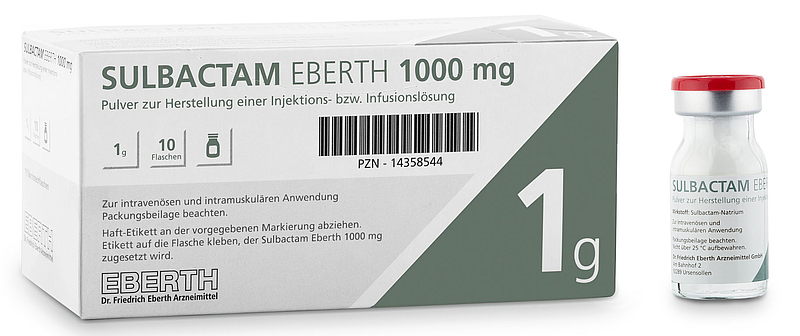Active substance:
Sulbactam Sodium
Pharmacotherapeutic group:
Beta-lactamase inhibitors
ATC code: J01CG01
Mechanism of action:
Sulbactam is an inhibitor of the following beta-lactamases: Richmond Type II, III, IV, and V beta-lactamases (plasmid or chromosomally mediated) produced by Gram-positive, Gram-negative, and anaerobic bacteria.
It also binds to some penicillin-binding proteins, so that the sensitivity of the strains sensitive to the antibiotic can be increased.
Sulbactam is only used in combination with beta-lactam antibiotics. The possible combination partners are: ampicillin, mezlocillin, piperacillin, cefotaxime or penicillin G.
The therapeutic use of the combination of sulbactam with ampicillin, mezlocillin, piperacillin and cefotaxime is well documented. In addition, there is limited therapeutic experience with the combination of sulbactam with penicillin G for skin / soft tissue infections and infections in the ENT area, which are also caused by beta-lactamase-producing staphylococci or beta-lactamase-producing Gram-negative anaerobes (e.g. Bacteroides and Prevotella species) can be caused. Methicillin-resistant staphylococci are to be considered resistant to the above combinations.
The addition of sulbactam protects the selected beta-lactam antibiotic from being destroyed by beta-lactamases, thus expanding the spectrum of action of this antibiotic and increasing its bactericidal effectiveness against most of the beta-lactamase-producing pathogens. In contrast, sulbactam is not suitable if an infection is caused by pathogens that are already fully sensitive to the combination partner.
Therapeutic indications
Sulbactam Eberth is a beta-lactamase inhibitor and is suitable for the therapy of moderate to severe bacterial infections in combination with certain beta-lactam antibiotics. Such combinations should be used in clinical practice if they offer greater therapeutic safety than administration of the respective beta-lactam antibiotic in monotherapy.

